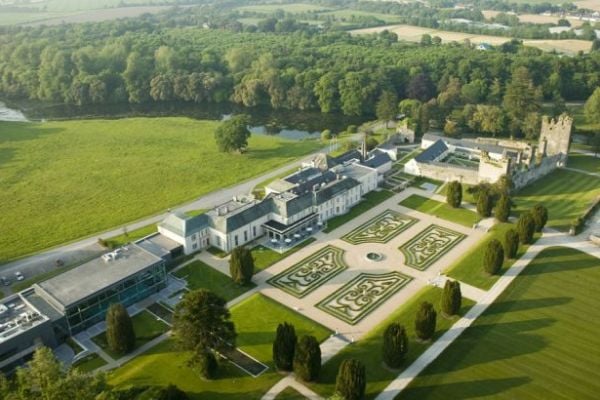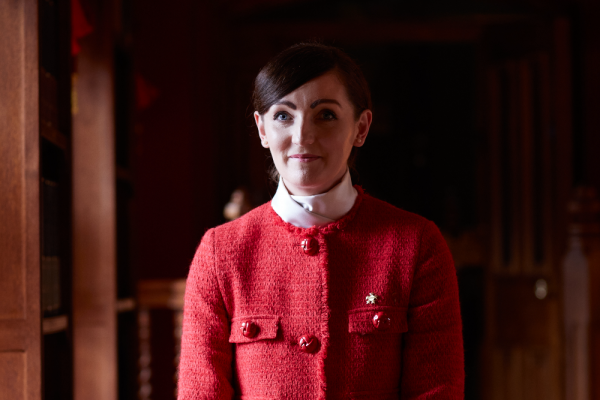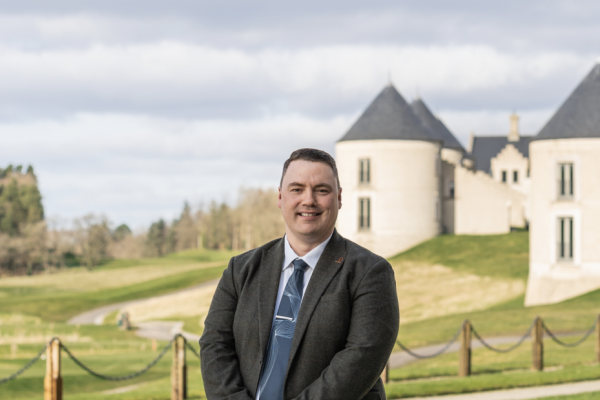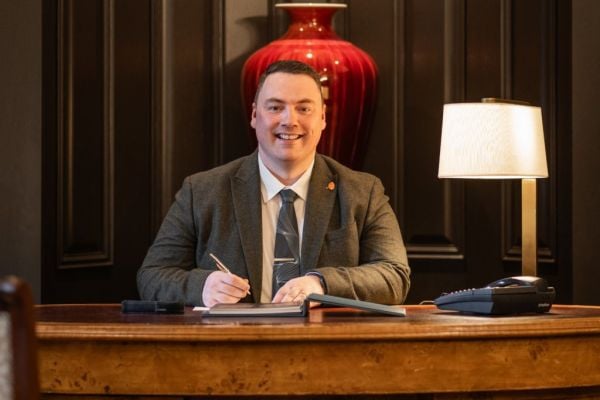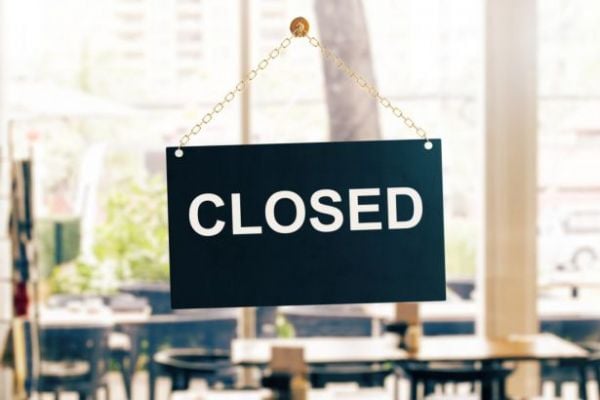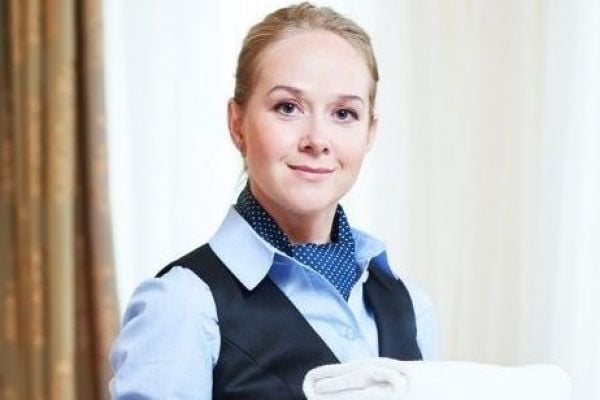Three years ago, Kanye West and Kim Kardashian spent their honeymoon at Castlemartyr Hotel and Resort, a palatial 17th-century manor house built around 13th-century Norman castle ruins. In September 2015, the five-star, 220-acre estate set in the quiet countryside outside Cork, Ireland, was bought by British hotelier Martin Shaw, who also has a major stake in Hampshire’s golf mecca Old Thorns Manor, for $16 million.
Since the sale, Shaw has doubled down on his investment, refurbishing everything from the premier golf course to the world-class spa. But the resort is benefiting from Brexit more than any glamor afforded by a jet-setting celebrity duo.
Since the 2008 recession, nearly a dozen heritage properties such as Castlemartyr have been scooped up and targeted for face-lifts throughout Ireland. The legendary Ashford Castle sold for $23 million to the Red Carnation Hotels group in 2013; the storybook Waterford Castle with its Rapunzel towers, sold for $7 million in 2015 to the Australia-based investor Seamus Walsh; and Hogwarts-esque Adare Manor, bought by horse racing titan J.P. McManus for $30 million the same year.
Moneyed investors were seizing on great real estate deals—compare Castlemartyr’s $16 million price tag with the $90 million it cost to build up. The capital they saved on their purchases turned into generous slush funds for renovations. And now, after the June 2016 vote that led to Brexit, the uncertainty about future trade terms with the United Kingdom has prioritized skilled construction and restoration work from British vendors while it’s still possible.
In the process, these charming Irish castles have quickly morphed from British-occupied weekend retreats to world-class resorts, drawing the attention of well-heeled travelers from the Americas and beyond. And the early returns are positive. Though the number of U.K. travelers is down, tourism from outside Europe is surging. And those visitors are adding more to the economy, too—travel spending from non-European, non-British travelers is up by more than 20 percent year-to-date.
Counterintuitive to the fears that Brexit may stifle the local economy, the International Monetary Fund expects Ireland to achieve 3.5 percent gross domestic product growth this year and 3.2 percent in 2018. For the fourth year running, Ireland is set to have the fastest-growing economy in the European Union, boosting confidence among upgrade-happy hoteliers. The Kim and Kanye effect is just icing on the cake.
Ireland’s Comeback
Few real estate markets took as dire a hit following the global financial crisis as the Irish countryside. Years of tax allowances had let Irish hoteliers write off the costs of construction, and Irish banks became dangerously overexposed.
According to Marcus Magnier, the selling agent for Waterford Castle and a director at Colliers International in Dublin, many Irish citizens had their pensions in bank shares at the time. So when the banks failed, domestic wealth—and domestic tourism—plummeted, sending half of Ireland’s property into receivership. Financial institutions such as Ernst & Young took possession of manors and scrambled to find new owners, even if it meant selling at a loss.
“Every single hotel that sold would have been in need of varying levels of capital expenditure,” Magnier said. “They were absolutely starved, starting to look tatty and tired, and needed a cash injection.”
Britain’s Article 50 withdrawal from the EU next March and the details of the U.K.’s future relationship and trade terms with the union are still unclear. So far, Irish manors seem to be trying to get ahead of the uncertainty. “It would appear prudent to get these refurbishments done sooner rather than later,” said Garry Kelleher, chair of the Culture, Arts, Sport and Tourism Committee of the British Irish Chamber of Commerce in Dublin.
“The ability to access services from the U.K. isn’t assured given the current condition we are in on Brexit,” added Katie Daughen, head of Brexit research support services at the BICC. “So if you did have a service supplier from the U.K. who you really wanted to use, there is the possibility that you might not be able to access their services after Brexit.”
Adare Manor, for instance, is set to reopen this fall after an 18-month restoration by Reardon Smith, the acclaimed British architectural firm, and a new golf clubhouse by London-based David Collins Studio. When complete, the neo-Gothic estate in County Limerick will also feature a new 42-room wing featuring expert stonework and wainscoting as dark as Guinness. It will have the only La Mer spa in Ireland and the U.K.—also built by a British firm that could soon be off limits.
Ballyfin, a 20-room estate in County Laois, has Colin Orchard & Co., a specialty London interior design firm, working on a two-bedroom suite called the Gardener’s Cottage, a stand-alone building outside the walled garden adjacent the manor house. Given the drawn-out permit process on the historic property, Ballyfin is aiming to have it ready by 2018, a time frame that would prevent Brexit entanglements from hampering its use of a British firm.
In the case of Castlemartyr, Shaw has already added 19 modern courtyard lodges and nine “gate” lodges with a nostalgic vibe; BBC golf commentator Peter Allis, a Brit, redid the inland links-style course. New clubhouse amenities are in the works, but Brenda Murphy, Castlemartyr’s director of sales and marketing, says the resort will avoid most Brexit complications by “keeping it as local as we can with regards to labor, trade, and supplies.”
Blessing in Disguise
In full-circle fashion, the sped-up restoration process has helped attract the international jet set, offsetting a dip in British tourism.
U.K.-based travelers have traditionally accounted for more than 40 percent of all foreign visits to Ireland; following Brexit, that number has been falling by as much as 10 percent, per Ireland’s Central Statistics Office. Magnier, the Waterford Castle agent, says one 23-bedroom manor house in Wexford has seen its British visitors drop by a full 30 percent. Its owners are planning to put it on the market.
“Manor hotels have to reposition themselves to cater for a different mix of visitors,” said Marie Hunt, head of research at commercial real estate company CBRE Ireland, which sold Adare. She added the property’s improvements have been aimed at attracting U.S. clientele.
The country is also benefiting from a growing reputation for safety, particularly in comparison with the U.K. and continental Europe. According to the Irish Tourist Industry Confederation, visitors from North America are up 24 percent year-to-date, those from Europe are up 4 percent, and entries from the rest of the world are up 22 percent. And they’re pumping more into the economy than British tourists as well: Figures from Fáilte Ireland, the National Tourism Development Authority, show that North American and continental European travelers are outspending British tourists by 21 percent and 49 percent, respectively.
Travel agents say that American travelers are increasingly responding to the romanticized countryside vacation seen in TV shows such as Downton Abbey. They’re drawn to glamorous, old-fashioned pursuits, like falconry, skeet shooting, and horseback riding.
“Those were activities of the wealthy, and now they serve as a reminder of status,” said Houston-based Cyd Clifford of TravelWorks LLC, who has seen an uptick in clients requesting manor house and castle-based vacations. “Those with the means seem to always push the norm. They’re always demanding more unique experiences.”
News by Bloomberg - edited by Hospitality Ireland
